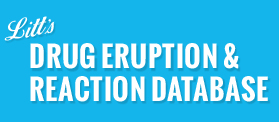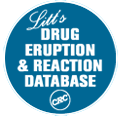The S-form, S-ketamine (esketamine; Spravato) is indicated, in conjunction with an oral antidepressant, for the treatment of treatment-resistant depression in adults.
Ketamine has become a popular recreational drug of abuse. Acute adverse effects following recreational use are diverse and can include impaired consciousness, dizziness, irrational behaviour, hallucinations, abdominal pain and vomiting. Chronic use can result in impaired verbal information processing, cystitis and cholangiopathy.
(2022) The FDA became aware of safety reports involving compounded intranasal ketamine to treat psychiatric disorders which may be putting patients at risk. Compounded drugs are not FDA-approved, which means FDA has not evaluated their safety, effectiveness, or quality prior to marketing.
Ketamine hydrochloride (tradename: Ketalar) is a Schedule III controlled substance that is FDA-approved as an intravenous or intramuscular injection solution for induction and maintenance of general anesthesia. Ketamine is a racemic mixture consisting of two mirror image molecules, R- and S-ketamine. FDA-approved labeling for ketamine contains warnings and precautions on hemodynamic instability, emergence reactions (vivid dreams, hallucinations, or delirium), respiratory depression, and drug-induced liver injury, among others.
Ketamine is not FDA-approved for the treatment of any psychiatric disorder. However, the “S” form of ketamine, which is derived from ketamine and known as Spravato (esketamine), is a Schedule III controlled substance that was approved by FDA in 2019 as a nasal spray for treatment-resistant depression in adults and depressive symptoms in adults with major depressive disorder with acute suicidal ideation or behavior, in conjunction with an oral antidepressant. Because of the potential risks associated with Spravato (esketamine), including sedation, dissociation, and abuse or misuse, its label contains Boxed Warnings, and Spravato is subject to strict safety controls on dispensing and administration under a safety program called a Risk Evaluation and Mitigation Strategy (REMS).
The Spravato REMS program requires Spravato (esketamine) to be dispensed and administered in health care settings that are certified in the REMS. Spravato (esketamine) cannot be dispensed for use outside the certified healthcare setting. Patients must be monitored inside the healthcare setting after administration for a minimum of two hours until patients are safe to leave.
Though esketamine is derived from racemic ketamine, they are not the same drug. Animal studies have shown that racemic ketamine can cause lesions in the brains of rodents; the relevance of this finding to humans is unknown. Animal studies with esketamine do not show these brain lesions.
- TRADE NAMES: Calypsol; Ketalar (Monarch); Ketalin; Ketanest; Ketolar; Petar; Spravato (S-isomer) (Janssen)
- INDICATIONS: Induction of anesthesia; treatment-resistant depression (S-isomer)
- SYNONYM: Esketamine (S-isomer)
- CLASS: Anesthetic, NMDA receptor antagonist (S-isomer)
- HALF-LIFE: 2–3 hours
- FDA APPROVAL DATE: 03/05/2019 (Esketamine)
- CLINICALLY IMPORTANT, POTENTIALLY HAZARDOUS INTERACTIONS WITH:
Memantine, Mivacurium
- See adverse reactions attributed to class:
Please login to view the rest of this drug profile.
Click on the DRUG REVIEW ARTICLE links (above) to see two reviews of ketamine and esketamine in the Taylor & Francis journal Expert Opinion on Drug Safety.
(Note that non-subscribers to the journal will only be able to see an abstract of the article.)
Page last updated 08/20/2025




